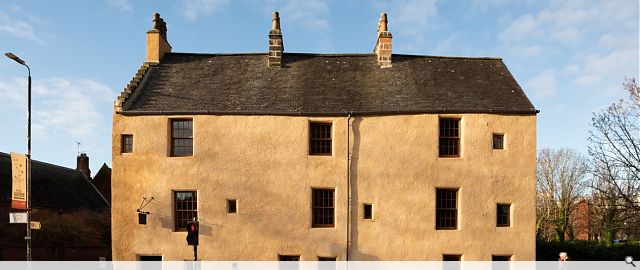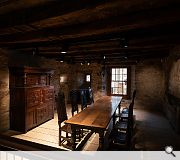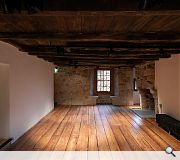Provand's Lordship
Provand’s Lordship reopened to the public on 29th March 2024, following a multi-year £1.6m refurbishment carried out for Glasgow Life.
Glasgow Life and City Building (Glasgow) appointed John Gilbert Architects to develop a scheme to preserve Provand’s Lordship for future generations while ensuring that it had the services and comfortable internal environment that would be expected of a modern facility. It is one of the city’s most significant buildings, with its earliest elements having been constructed in 1471, and is Category A listed. It is the second oldest building in the city centre, excepting only Glasgow Cathedral, and is Glasgow’s oldest surviving residential building.
The building was saved from demolition by the Provand’s Lordship Society in the early 1900s, and eventually passed in to the care of Glasgow Museums in 1978. It was around this time that the last comprehensive investment in the building’s fabric and services was made. Works to the building included renewal of services throughout, replacement of 1980s windows with new double-glazed units, replacement of rainwater goods, structural repair of walls, and repairs to the roof. The most noticeable change to the building is to the walls, the stonework was in poor condition and had been pointed with cement which was preventing the wall from breathing and increasing the rate of decay on the site.
The building was repointed internally and externally with a lime mortar that is sacrificial to the stone. Whilst externally a new lime harling finish was applied, this provides the building with a much greater capacity to absorb and release moisture in a sustainable way, making the building much more resilient to the effects of climate change such as increased and more intense rainfall. This isn’t a finish that is new to the building – archive research by the team uncovered photographs and paintings of the building which clearly demonstrates that the building had been harled previously, but that this was removed as part of the repairs project around 1920 that saw the building repointed in cement.
So whilst this is undoubtedly a significant change to the external appearance of the building, it has been undertaken based on historic evidence of previous finishes on the site, in response to decay which was clearly observable on the site due to historic repairs, and proactively to help the building better cope with our changing climate. The project team included John Gilbert Architects, Narro Associates, Luths Services and Frew Conservation, with works being delivered on site by City Building (Glasgow). Glasgow Life’s aim is to maintain and improve the cultural venues the charity manages to enhance the lives of the people of and visitors to Glasgow. The project represents the latest success in a series of strategic investments made by Glasgow Life in the city’s critical cultural assets, including the recently completed work at the Burrell Collection, the ongoing work at the Gallery of Modern Art, and the soon to commence project to restore the People’s Palace.
Back to Historic Buildings & Conservation
- Buildings Archive 2024
- Buildings Archive 2023
- Buildings Archive 2022
- Buildings Archive 2021
- Buildings Archive 2020
- Buildings Archive 2019
- Buildings Archive 2018
- Buildings Archive 2017
- Buildings Archive 2016
- Buildings Archive 2015
- Buildings Archive 2014
- Buildings Archive 2013
- Buildings Archive 2012
- Buildings Archive 2011
- Buildings Archive 2010
- Buildings Archive 2009
- Buildings Archive 2008
- Buildings Archive 2007
- Buildings Archive 2006





